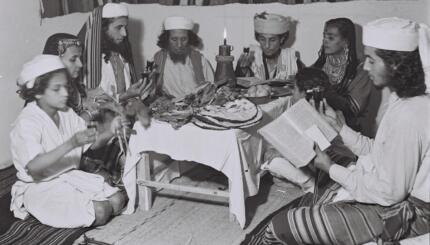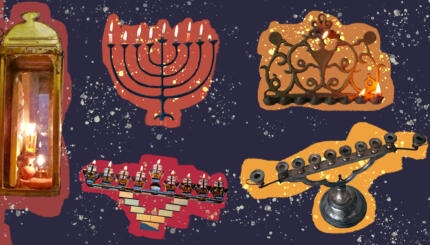Next week, as Jews celebrate the festival of Shavuot the ancient Hebrew words of the Book of Ruth will be read out loud around the world. Among Jews, there are many additional traditions that add to the wonder and joy of the holiday.
There is the custom of staying up all night to study selections from the Torah and the Zohar which is called velada, from the Ladino word meaning to guard or watch. There is the festive dairy meal which often features bourekas and other favorites. In many Sephardic congregations, the reading of Ruth is preceded by reading or singing the famous azharot, a poetical enumeration of the 613 commandments (mitzvot). Ladino-speaking Jews also included translations of this liturgy and added a unique Ladino song known as La Ketubah de la Ley, the marriage contract of the law, or Torah.
These and many other Sephardic Shavuot customs connect us to the now vanished world of Salonica.
In a recently translated and published Ladino language memoir, the well-known 19th-century journalist, publisher and musician Sa’adi Besalel a-Levi describes the scene in Salonica during the last century of the Ottoman Empire:
“My father was an observant Jew…. One Shavu’oth eve, he went after dinner to attend a study session according to the custom of all the Jews when they all went to their synagogues and no one stayed home. That time of the year, nights were shorter, dawn broke early around six thirty, some people would come back home to eat the enchusa, cheese pies, with some rice pudding, sotlach, then go to sleep until 1 or 2 p.m. Others went touring the parks, while lower-class people with wicker baskets filled with cheese pies, rice pudding, raki, and hard-boiled eggs went with their families to parks on the outskirts of the city to eat, get drunk, and fall asleep on the grass. Most of them returned home sick.”
Highlighting the customs in Salonica more than a half-century later, on the eve of World War II, poet Bouena Sarfatty (1916-1997) describes a similar scene of a Salonican Shavuot (Renée Levine Melammed, An Ode to Salonika, The Ladino Verses of Bouena Sarfatty, 43-44):
Beytsinar eze ouna vouerta grande.
Se kamina kilometros i nounka se ve entera.
Chevouotte debacho el arvole mos asentamos kon la mujer i las kriatouras.
Yivamos Sestos yenos de koumida,
Sin moz oulvidar el sotlatsi i raki Nahmias.
El golf komo Kristal; azemos bagno de mar.
Bevamos a la saloud de Daniel Amar.
Bes Tsinar is a large garden.
One can walk for miles and never see its eternity.
On Shavout we sit under the tree with the wife and the children.
We bring baskets filled with food
Without forgetting the rice pudding dessert and the Nahmias ouzo.
The Gulf [of Salonika] is (clear) like crystal; we take a dip in the sea.
Let us drink to the health of Daniel Amar.
The Salonican rabbi and historian Michael Molho describes the joyous atmosphere in his native city on Shavuot in his book, Traditions and Customs of the Sephardic Jews of Salonica:
“They would pray and spend the night of the festival in holy readings and songs of joy. They would then arrange to spend some time outside the city, in the middle of green fields under a blue sky. Very early, they would leave the city via one of the gates in the city walls, taking with them a basket full of provisions: cheese pies, hard-boiled eggs, mutton with peas, various salads and above all, the famous sotlach, prepared with goats milk and well-cooked so that the cream pudding takes on a light coffee color and the surface is full of wrinkles like the cheeks of an elderly lady…Naturally there was no shortage of raki.”
Though the customs of the Jews of Salonica tragically came to an end with the Nazi occupation and annihilation of the community, Ladino customs of the holiday live on. Inspired to preserve the memory of those communities destroyed by the Nazis not only in Salonica, but also in Rhodes, descendants of these communities have sought to preserve the spiritual and intellectual accomplishments of their forbearers.
Today, we can access the riches of Ladino Shavuot liturgy online and help keep these timeless traditions alive.
Happy Holiday!
A more extensive discussion of Sephardic liturgy for Shavuot can be found here on the UW Stroum Center for Jewish Studies blog.



